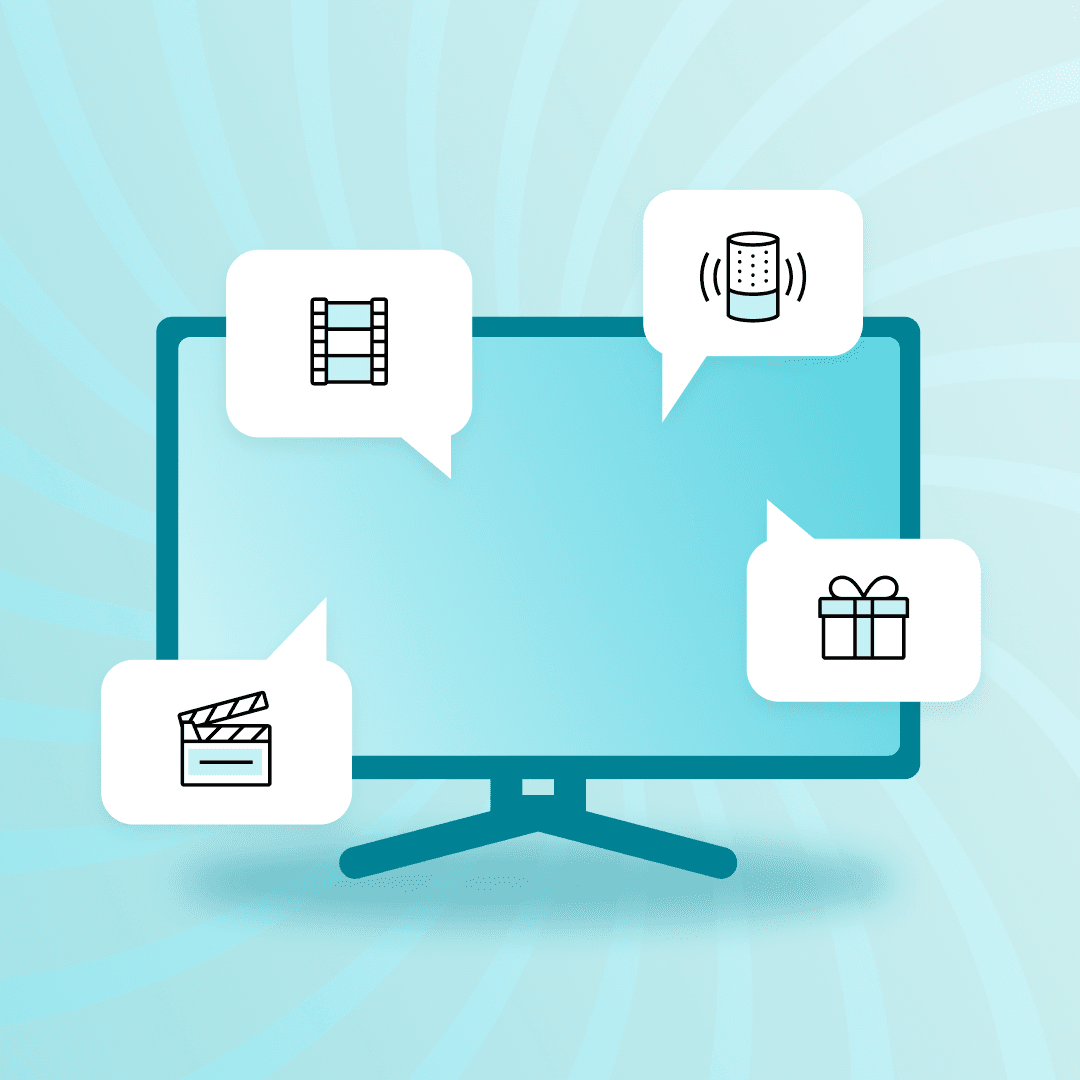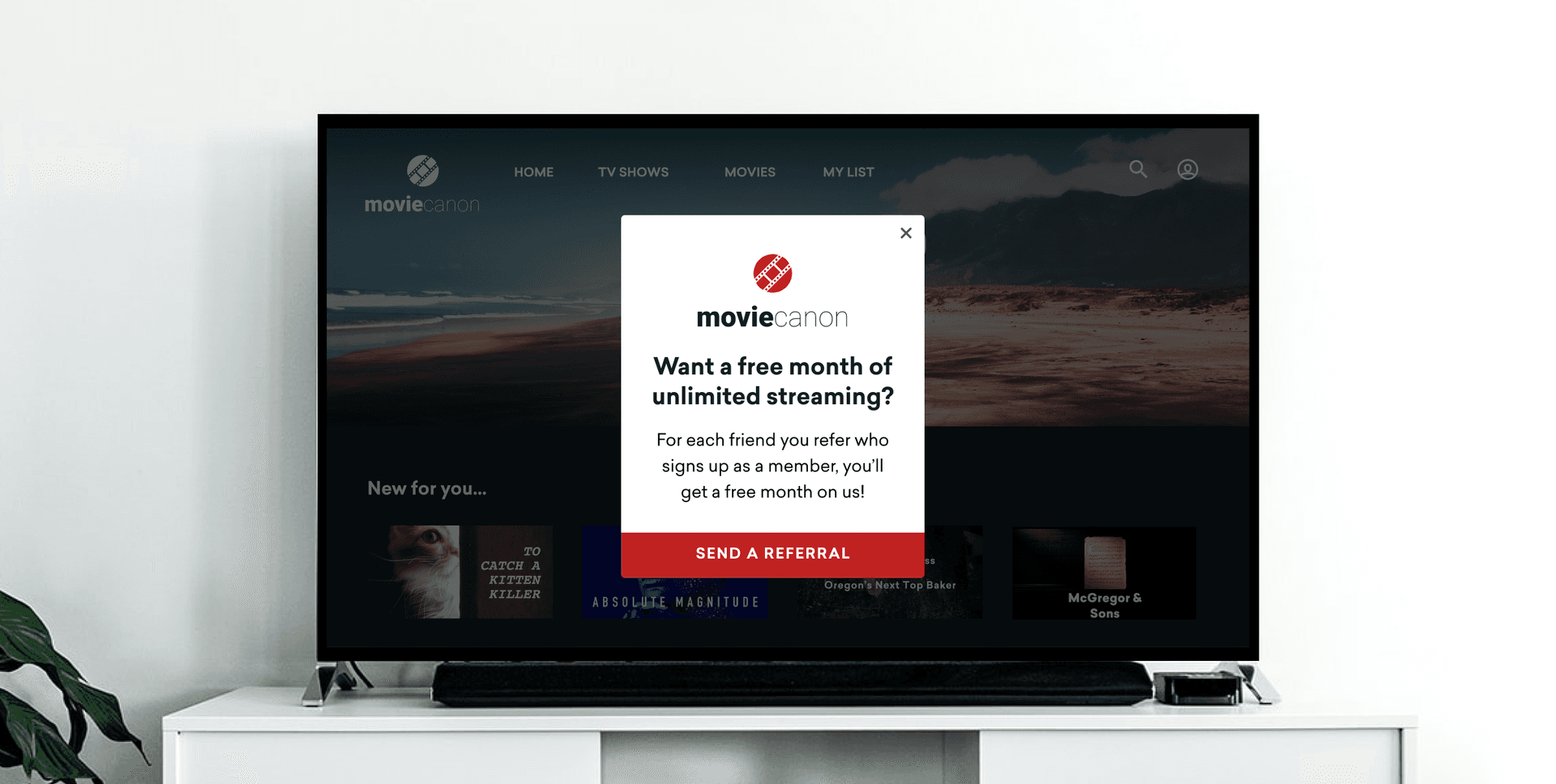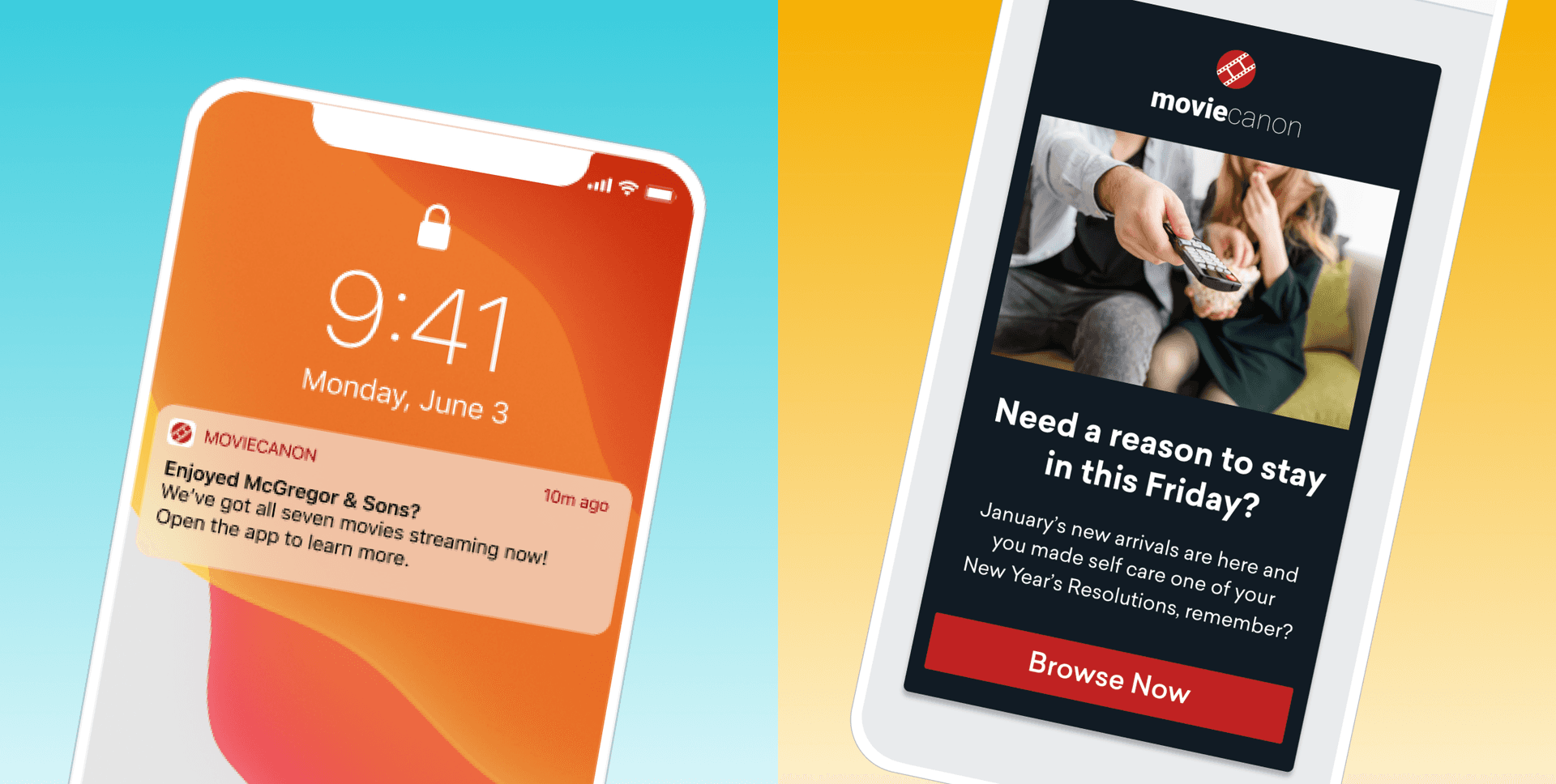What Are Connected TV Notifications?
Published on April 07, 2021/Last edited on April 07, 2021/4 min read


Team Braze
With an ever-growing list of streaming services, viewers certainly don’t lack entertainment options. Yet despite what seems like a new launch every month, the average American subscriber still only watches 3.4 of these services. So, how can brands capture audiences in this increasingly crowded market? First and foremost, you need to produce high-quality streaming content. But in order to keep viewers on the platform, you need a messaging strategy that builds brand loyalty through reminders, recommendations, and more. That’s where connected TV notifications come in.
Leveraging Connected TV Engagement Data
Before we dive into connected TV notifications, we need to talk about data. The great thing about streaming is that you can do it anywhere there’s an internet connection. From smart TVs to laptops to smartphones, your favorite shows are a click away. That means brands that make it possible for users to stream binge-worthy content can keep audiences entertained and on the platform no matter where they are.
Streaming services also produce a wealth of data for brands that know how to leverage it. By getting a cross-platform view of your customers, you’ll know when to send messages, which device to send them to, and which ones will resonate. For example, let’s say you have a customer who enjoys romantic comedies and typically logs in around 8 pm. Sending a push notification using send-time optimization with a recommendation for your newest saucy title will improve her engagement and reinforce brand loyalty.
Braze customers can do this by integrating with over-the-top (OTT) and connected TV platforms and devices such as Roku,AppleTV, Android TV, Fire Kindle, and Fire TV to access a single audience view. Once you’ve added Braze to your marketing stack, you can create cross-device user IDs that let you track individual customers as they move across devices.
Adding Connected TV Notifications to Your Cross-Channel Strategy
Alright, let’s say you’ve set up cross-device IDs and have started tracking your audience. You know which types of content they prefer, when they typically log on, and which devices they use. Now it’s time to add connected TV notifications to your cross-channel strategy.
There are two types you can use: On-screen notifications and second-screen notifications.
On-screen notifications are pretty self-explanatory. These notifications pop up on the screen while someone is logged in to a TV subscription service. They include in-app messages and Content Cards that are designed to engage viewers with personalized recommendations and content streams. However, not every Connected TV platform or device is set up to support these kinds of notifications, so it’s important to leverage a cross-channel approach to ensure that viewers see your outreach.

Second-screen notifications, on the other hand, are messages you send to mobile phones and other devices based in part on data that you’re collecting from Connected TV platforms. These can include push notifications that re-engage lapsed users and email recommendations for similar content and new releases. These messages can be a great way to reach users who are using platforms/devices that don’t support on-screen notifications and make it possible to keep up with your streaming viewers even when they’re not actively watching content.

Keeping Up with Streaming Trends
As you track your audience, keep in mind that a set-it-and-forget-it approach to connected TV won’t work. Just because our romantic comedy fan prefers that genre doesn’t mean she won’t get hooked on the newest true crime series. If that happens, be prepared to switch up your messaging to recommend a similar series or documentary she may enjoy.
The same is true with messaging platforms. If customers aren’t opening emails anymore, they may be more receptive to push notifications. Remember, keeping your finger on the pulse of your audience’s preferences will go a long way to ensure they don’t wander off to another streaming service.
For more on streaming trends and engagement best practices, check out our report 2020: The Year of Streaming.
Related Tags
Be Absolutely Engaging.™
Sign up for regular updates from Braze.
Related Content
View the Blog
A day in the life of a data scientist on the BrazeAIᵀᴹ forward-deployed engineering team

McKay Jensen

The new inbox reality: How iOS changes are reshaping email marketing

Aparna Prasad

Experience optimization: Turning data insights into better journeys
